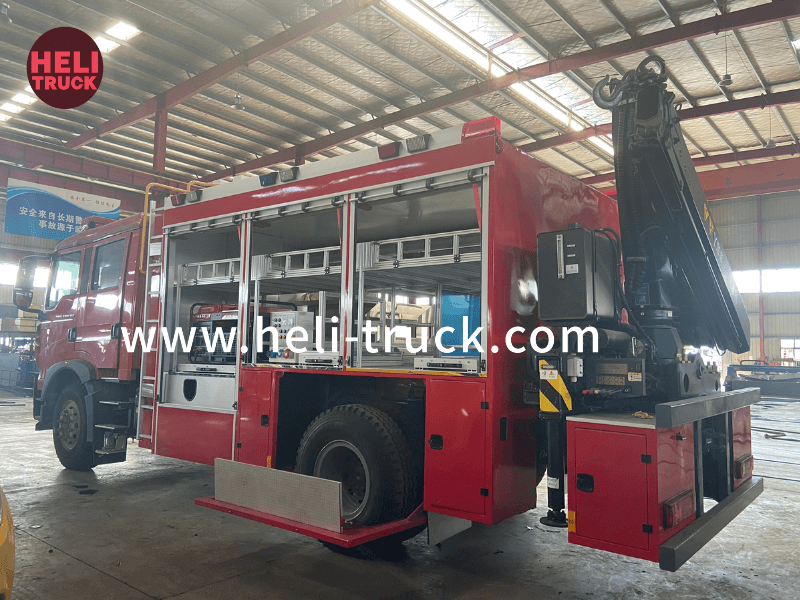Introduction
Garbage compactor trucks play a vital role in the efficient collection and disposal of waste in urban and rural areas. These trucks are equipped with specialized engines that are designed to handle the rigorous demands of waste management operations. In this comprehensive guide, we will delve into the intricate details of garbage compactor truck engines, exploring their unique features, functions, maintenance requirements, and the latest advancements in engine technology.
1. Evolution of Garbage Compactor Truck Engines
Garbage compactor trucks have come a long way since their inception, and so have their engines. In the early days, these trucks were powered by basic diesel engines that lacked the efficiency and power required for heavy-duty waste management tasks. However, with advancements in engine technology, modern garbage compactor truck engines are now highly specialized and optimized for the demanding nature of waste collection and compaction.
2. Key Components of a Garbage Compactor Truck Engine
a. Engine Block: The engine block is the main structural component of the engine and houses the cylinders, pistons, and other vital parts. It is typically made of cast iron or aluminum to provide strength and durability.
b. Cylinder Head: The cylinder head sits atop the engine block and contains the valves, spark plugs, and fuel injectors. It plays a crucial role in the combustion process and ensures optimal performance.
c. Pistons and Connecting Rods: Pistons move up and down in the cylinders, while connecting rods transfer this motion to the crankshaft. These components are essential for converting the energy generated by fuel combustion into mechanical power.
d. Fuel System: Garbage compactor truck engines are typically equipped with a fuel injection system that delivers precise amounts of fuel to the cylinders for combustion. This system ensures efficient fuel utilization and reduced emissions.
e. Cooling System: The cooling system helps regulate the engine temperature by circulating coolant through the engine block and radiator. This prevents overheating and ensures optimal performance and longevity of the engine.
f. Exhaust System: The exhaust system removes combustion by-products from the engine and directs them out through the tailpipe. It includes components such as the exhaust manifold, catalytic converter, and muffler.
3. Functionality of Garbage Compactor Truck Engines
Garbage compactor truck engines are designed to provide the power and torque needed to operate the compaction mechanism and hydraulic systems of the truck. These engines are optimized for stop-and-go driving conditions, frequent idling, and heavy loads, making them well-suited for waste management applications.
The engine drives the hydraulic pump that powers the compactor mechanism, which compresses the collected waste to maximize the truck's carrying capacity. Additionally, the engine provides power to the truck's auxiliary systems, such as the steering, braking, and lighting systems, ensuring safe and efficient operation during waste collection routes.
4. Maintenance and Care of Garbage Compactor Truck Engines
Proper maintenance is essential to ensure the longevity and reliability of garbage compactor truck engines. Regular maintenance tasks include oil changes, filter replacements, and inspection of key components such as belts, hoses, and gaskets. Additionally, it is crucial to adhere to the manufacturer's recommended service intervals and use high-quality lubricants and parts to keep the engine running smoothly.
Regular inspections of the cooling system, fuel system, and exhaust system are also important to prevent issues such as overheating, fuel leaks, and exhaust emissions. Addressing any potential problems early on can help avoid costly repairs and downtime during waste collection operations.

5. Advancements in Garbage Compactor Truck Engine Technology
With the increasing focus on sustainability and environmental conservation, manufacturers are constantly innovating to develop more efficient and eco-friendly garbage compactor truck engines. Some of the latest advancements in engine technology include:
a. Hybrid and Electric Engines: Hybrid and electric garbage compactor truck engines are gaining popularity due to their reduced emissions and lower fuel consumption. These engines utilize a combination of electric motors and internal combustion engines to power the vehicle, providing improved efficiency and environmental benefits.
b. Emission Control Systems: Advanced emission control systems such as selective catalytic reduction (SCR) and diesel particulate filters (DPF) are being integrated into garbage compactor truck engines to reduce harmful pollutants and comply with stringent emissions regulations. These systems help minimize the environmental impact of waste management operations.
c. Telematics and Remote Diagnostics: Telematics systems are being integrated into garbage compactor truck engines to provide real-time data on engine performance, fuel efficiency, and maintenance needs. Remote diagnostics tools allow fleet managers to monitor engine health and address any issues proactively, minimizing downtime and maximizing productivity.
6. Conclusion
Garbage compactor truck engines are the powerhouse behind efficient waste management operations, providing the power and reliability needed to collect, compact, and transport waste effectively. These specialized engines are designed to withstand the demanding conditions of waste collection routes and are essential for maintaining clean and sustainable urban environments.
By understanding the key components, functionality, maintenance requirements, and advancements in garbage compactor truck engine technology, fleet managers and operators can ensure the optimal performance and longevity of their vehicles. As technology continues to evolve, garbage compactor truck engines will undoubtedly become more efficient, eco-friendly, and reliable, further enhancing the capabilities of waste management fleets around the world.
